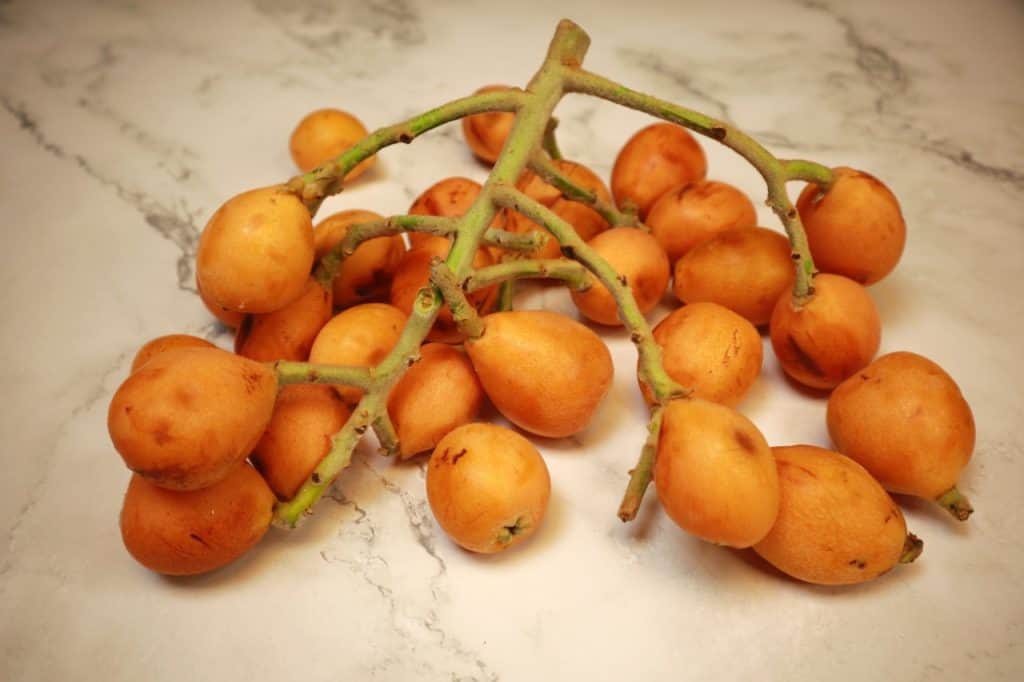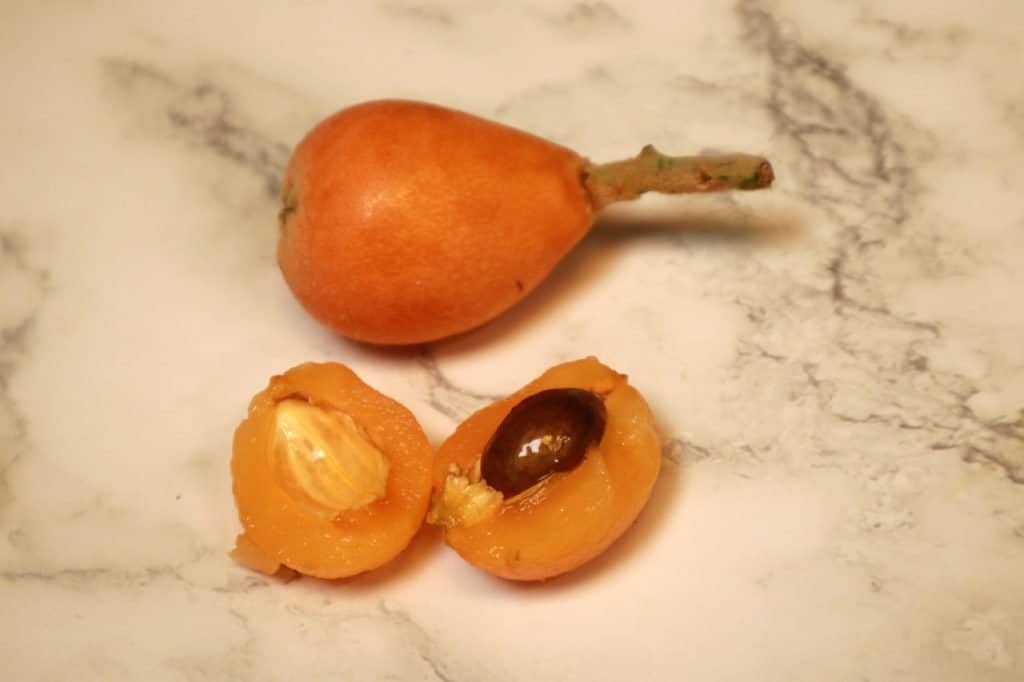All You Need to Know About Nispero
One of the joys of travelling is discovering new products to cook with. Since relocating to Spain we are enjoying finding new ingredients to cook with, and May is the harvest month of the nispero.

Nispero, also named loquat or medlar, is a soft fruit that was first cultivated in Asia and more specifically in Japan and China. Sailors have distributed this fruit to other tropical countries all around the world and so it was introduced to Spain about two thousand years ago. The loquat tree grows best in regions where citrus trees thrive, which is along the Mediterranean coast. We are lucky enough to live in La Nucia, close to Callosa d’En Sarrià and Altea, in the heart of the region where nispero grows. Markets and supermarkets have an abundance of this fruit and we felt the need to prepare a few dishes with this locally grown, fresh product.
The nispero tree
In Spain, the tree is referred to as nísperero del Japón while the fruit is named níspero japonés, another hint to the origin. The tree is an evergreen which can grow up to 5-10 metres tall and has a short trunk with a rounded crown. The youngest branches are kind of woolly.

When driving through the region, especially from Altea to Callosa, there are lots of trees growing alongside the roads but there are also a mass of tents covered with mesh to protect the medlar plantations against birds.
The harvest
The two main varieties of nispero grown in Spain are Argelino (Algar) and Tanaka. The Argelino ripens a little earlier and is slightly sweeter, perfect for eating straight after harvesting. The Tanaka is harvested later and is more suitable for making jams and cooking in pies as well as in other cooked recipes. The loquat season starts in April and lasts all May, and part of June. The fruit does not ripen off the tree and needs to be harvested when ripe.
The appearance and taste of nispero
Some say it’s an ancient fruit, related to the apple and the quince. This egg-shaped or pear-shaped fruit has a soft skin, silky flesh with the colour ranging from yellow to deep orange. The flavour can be slightly sour and turns a little sweeter if the fruit is more ripe. The texture is in between a grape and another tropical fruit named longan, but it is very juicy. The skin is edible, especially when freshly picked from the tree, but we prefer to peel it off.

The fruit contains at least two brown seeds or stones that are not edible. Beware that loquats should be consumed quickly as they cannot be stored for long after harvesting.
Storing nispero
Once the fruit is ripe and harvested it will only keep shortly at cool temperatures. Professionals are able to store them for longer in huge chilled rooms and the Spanish harvested fruit is mainly exported to Russia where the fruit is well appreciated. We have kept the fruit for up to 5 days but it’s challenging in warmer temperatures and we recommend consuming it as soon as it is taken from the tree.
How to prepare nispero
Besides eating loquat out of hand, easy ways to prepare this fruit are into fruit salad, jam, or fruit juice. But we like to think outside the box and love to use this delicious product in culinary creations such as tartare from maguro tuna or make a nispero salsa to pair with salmon or chicken. Nispero crumble is another delicious recipe.
Because this fruit is available seasonally and in abundance, consider peeling and seeding, then blanching before freezing them for later use.